Keen readers of this blog will know that we have been pondering a visit to San Agustín but have been aware of FCO warnings about travelling in this area. It is certainly remote and has been a dangerous guerilla area in the past but the situation in Colombia is clearly improving all the time. Many Colombianos have said that this area is now safe so we decided to go for it. However, we soon realised that we would have to break another of our safety rules and take an overnight bus. So it was with a little trepidation that we headed to the bus station for 9pm and our 10 hour journey. In fact the journey was absolutely fine although it did take the 12 hours that we had actually expected it to take.
We've gone a bit hippy again here and contacted Rene who has an Eco-lodge outside the town and up a very steep hill (not so obvious from the website). We are staying in a 'chalet', which is a charming little house with non-square doors and windows and is made of bamboo and recycled string and sealing wax or something like that. All the buildings here have different shapes and outside walls are artfully decorated. Still, we have a balcony and a hammock (and an easy chair that Tony has stolen from outside another empty bungalow) so life is good!
Our purpose of visiting here is to see something of the strange culture which had developed in this area in the 1st – 9th centuries AD. By the time the Spanish arrived, all trace of these people had disappeared and very little is known about them. What they have left, however, is the evidence of their elaborate burial rituals. Like many cultures in South America, they practiced two burial rituals. The first was to bury the bodies, usually underground, with piles of grave goods. When the body’s soft tissue had all rotted away, the bones were dug up and reburied in funery urns with yet more grave goods. In this area, the second burials were in chambers formed from stone slabs (similar to dolmens) and protected by statues.
Most of these are of fearsome human forms but others show animal deities such as frogs and jaguars. Around 500 of these statues have been discovered in the general area ranging in size from 20cm (nothing very fearsome about that one) up to 7 metres (that’s a bit scarier).
We set out with a typically sketchy map to find our way around some of the sites. Many travellers choose to do this on horseback with a guide but Tony’s almost pathological fear of horses put paid to that option. The first stop was the archeological park, a huge area of forests and hills where there were several areas of tombs to visit. We really enjoyed the statues, with their vicious looking fangs, their weapons and horrible stuff like strangling children. Although there is a bit of a formula here, there are lots of subtle variations and we enjoyed playing the 'how scary is that one’ game; our general agreement is that they are scariest when they have their willies out.
Within the park there is an area by the river, known as La Fuente del Lavapatas (The Feetwashing Fountain), which had been carved into a series of figures, fountains and waterfalls at around the same time. As you looked down it became apparent that all of the rocks had been carved with the outlines of animals which originally would have channelled water around the wide area.
Sadly, the water is currently quite limited but there are big plans to completely refurbish the fountains. They have already placed a cover over the whole thing to prevent further corrision and eventually they plan to get the water flowing through the carvings again.
We then followed another steep path to reach the highest point of the park with stunning views in every direction and a tangible feeling of being close to the elements. You could really begin get an inkling of why these people had chosen to build their burial sites here. Another group of statues had been placed here, some interesting forms but once again with no real context.
Generally we had been a bit disappointed that the displays didn’t give us a very good picture of how these tombs looked when originally made (or even when first discovered). Of course grave-robbers have done their bit to mess everything up (and we have already noted how there are loads of these statues all over Colombia). However, the last group of graves did give a more atmospheric picture of how the statues were arranged to ward off any would-be tamperers.
One less successful aspect of the park is the ‘wood of the statues’ where 35 statues are set out beside a woodland walk. There seems no logic for this at all and we would have prefered to see the statues back in their proper places.
We headed away from the park, following a dirt track up another steep hill to try to find some more sites that might give us a better ‘in-situ’ feling. After quite a lot of traipsing, covering a lot of distance with very little in the way of signposting, we reached our first objective. However, this was even more diappointing as it was just a collection of a handful of statues in an open sided shed in a field!
Most of the individual statues are interesting but we craved more context! We walked on towards our next stop, Chaquirá, and found ourselves approaching the edge of a deep ravine at the bottom of which was the raging River Magdalena. Our pathway started to descend rapidly and we found ourselves on a pathway clinging to the cliff side.
Eventually we reached a sort of platform and could see what we had come for, a large carving into the rock of a human figure with his arms outstretched obviously scaring away anyone coming down the river. Now it was time to make the scarily steep return up the cliff and make a further trek back to the town and then out to our hostel (after a very substantial day’s walking we were beginning to think that a place in town would have been better after all!)
We had arranged to take a jeep tour to the outlying sites the following day if others could be found to share the cost. So we were surprised when our driver Juan turned up in an elderly saloon car with jacked up suspension. However, we piled into the car to collect the other guests, Adam and Lucas, two Australian brothers on a whistle stop tour of South America. The car bumped away through the rutted and potholed roads, none of which have any solid surface but we had a enjoyable day travelling through some really lovely landscape.
During our journey we saw some of the local landscape hotspots including El Estrecho where the powerful torrent of the River Magdalena is forced through an opening in the rocks which is only 2.2 metres wide.
Apparently it used to be popular to try to kayak through the narrow opening but it is now banned because too many people just missed. We also visited a couple of waterfalls; both of which were powerful and beautiful in their own ways. They would be real attractions in UK but we still have very strong memories of the mighty force of Iguazu!
We inwardly sighed when Juan pulled up alongside a heap of sugarcane and some rural sheds and said that we were going to visit a sugar cane processing plant. We avoid organised tours, which usually include a side track like this to a demonstration for tourists. It is generally an excuse to try to sell souvenirs that no-one really wants. However, this was genuine work going on, in incredibly precarious circumstances, which certainly would not comply with UK health and safety regulations!
Huge sticks of sugar cane were being fed manually into a fierce machine to extract the juice. There was no protection for either the workers feeding their hands into it or those of us passing closely by as we made our way to the series of boiling vats of juice. There a mystery person, hidden in the clouds of steam, ladled the boiling sugar from one vat to another.
Eventually, nicely thickened and caramel coloured, it was ladled into wooden moulds. Here bees crawled all over it, taking great advantage whilst it cooled and set into blocks. Colombians definitely have a sweet tooth and use this sugar in almost every food they make.
We drove on to Obando, a historic site that we hadn’t really heard anything about. Here there were several tombs where the practice of first and second burials took place together. The visitors' centre and the information gave a good impression of how things had been when discovered. The tombs have steep staircases spiraling down to the burial chambers. They are similar to those we hope to see soon in Tierradentro and some here also show traces of painted decoration.
The two remaining archeological sites that we visited, El Alto de los Ídolos and El Alto de Las Piedras, had considerably more complete graves that gave a much better picture of how the statues had been used. They were also interesting because they had several statues of different styles to those we had seen before.
We were also able to see faint vestiges of the brightly coloured paint that had originally been on all the stones and statues. The tombs must have looked very different when first constructed, with coloured figures and the walls decorated with patterns of circles in red, yellow and black.
The museum at the former site also had some interesting pictures of the site in earlier years when more of the statues were still in their original positions and it was acceptable to climb on and pose with them for photos. Not that Tony would have jumped the fencing to pose with a statue, he does exactly what he is told...
Strange statues in the wilds of nowhere.
Sunday, May 23, 2010
 San Agustin, Colombia
San Agustin, Colombia
Other Entries
-
103We set sail, eventually.
Apr 1736 days prior Bartoleme, Ecuadorphoto_camera46videocam 0comment 4
Bartoleme, Ecuadorphoto_camera46videocam 0comment 4 -
104Iguanas in all their many forms.
Apr 1835 days prior Santa Fe Island, Ecuadorphoto_camera32videocam 0comment 3
Santa Fe Island, Ecuadorphoto_camera32videocam 0comment 3 -
105Not all the animals here are friendly.
Apr 1934 days prior San Cristobal, Ecuadorphoto_camera8videocam 0comment 1
San Cristobal, Ecuadorphoto_camera8videocam 0comment 1 -
106Albatross, fresh albatross!
Apr 2033 days prior Espanola, Ecuadorphoto_camera29videocam 0comment 1
Espanola, Ecuadorphoto_camera29videocam 0comment 1 -
107Jen has mixed feelings about stingrays!
Apr 2132 days prior Floreana, Ecuadorphoto_camera11videocam 0comment 1
Floreana, Ecuadorphoto_camera11videocam 0comment 1 -
108That's the way, A-a A-a, I like it!
Apr 2231 days prior Isabela, Ecuadorphoto_camera25videocam 1comment 2
Isabela, Ecuadorphoto_camera25videocam 1comment 2 -
109Big Boy Diego struts his stuff and we fly out.
Apr 2330 days prior Puerto Ayora, Ecuadorphoto_camera10videocam 0comment 1
Puerto Ayora, Ecuadorphoto_camera10videocam 0comment 1 -
110In the dangerous city we have too many cocktails
Apr 2528 days prior Quito, Ecuadorphoto_camera31videocam 0comment 2
Quito, Ecuadorphoto_camera31videocam 0comment 2 -
111We look for the Virgin on the Rocks.
Apr 2627 days prior Ipiales, Colombiaphoto_camera22videocam 0comment 0
Ipiales, Colombiaphoto_camera22videocam 0comment 0 -
112A bright white city with a great dark bar.
Apr 2924 days prior Popayan, Colombiaphoto_camera31videocam 0comment 0
Popayan, Colombiaphoto_camera31videocam 0comment 0 -
113We avoid hot spots and enjoy suburban life.
May 0221 days prior Medellin, Colombiaphoto_camera34videocam 1comment 0
Medellin, Colombiaphoto_camera34videocam 1comment 0 -
114Nobody expects the Spanish Inquisition...
May 0518 days prior Cartagena, Colombiaphoto_camera26videocam 0comment 3
Cartagena, Colombiaphoto_camera26videocam 0comment 3 -
115Traditional fishing village or party-goers heaven?
May 1013 days prior Taganga, Colombiaphoto_camera16videocam 1comment 4
Taganga, Colombiaphoto_camera16videocam 1comment 4 -
116Hotel of the Snows in another white city
May 1211 days prior Girón, Colombiaphoto_camera19videocam 0comment 0
Girón, Colombiaphoto_camera19videocam 0comment 0 -
117We like the houses but not the pizza...
May 149 days prior Tunja, Colombiaphoto_camera52videocam 0comment 7
Tunja, Colombiaphoto_camera52videocam 0comment 7 -
118Fossils, dinosaurs &, surprisingly, more willies!
May 176 days prior Villa De Leyva, Colombiaphoto_camera47videocam 0comment 2
Villa De Leyva, Colombiaphoto_camera47videocam 0comment 2 -
119Gold, art, violence and the hunt for a drug baron
May 203 days prior Bogota, Colombiaphoto_camera55videocam 0comment 3
Bogota, Colombiaphoto_camera55videocam 0comment 3 -
120Strange statues in the wilds of nowhere.
May 23 San Agustin, Colombiaphoto_camera71videocam 2comment 1
San Agustin, Colombiaphoto_camera71videocam 2comment 1 -
121An eventful trip to see some old decorating
May 252 days later Tierradentro, Colombiaphoto_camera53videocam 0comment 0
Tierradentro, Colombiaphoto_camera53videocam 0comment 0 -
122Is travelling hopefully better than arriving?
May 274 days later Popayan, Colombiaphoto_camera7videocam 0comment 0
Popayan, Colombiaphoto_camera7videocam 0comment 0 -
123Colombia chooses; bulldog or guinea-pig?
May 285 days later Pasto, Colombiaphoto_camera12videocam 0comment 3
Pasto, Colombiaphoto_camera12videocam 0comment 3 -
124Fun and games at the middle of the world
May 318 days later Quito, Ecuadorphoto_camera32videocam 0comment 1
Quito, Ecuadorphoto_camera32videocam 0comment 1 -
125If you want to get ahead, get a hat...
Jun 0311 days later Cuenca, Ecuadorphoto_camera35videocam 0comment 3
Cuenca, Ecuadorphoto_camera35videocam 0comment 3 -
126Not a lot to do here...
Jun 0614 days later Loja, Ecuadorphoto_camera13videocam 0comment 1
Loja, Ecuadorphoto_camera13videocam 0comment 1 -
127Sad news about Janet.
Jun 0614 days later Piura, Peruphoto_camera3videocam 0comment 4
Piura, Peruphoto_camera3videocam 0comment 4 -
128If in doubt, beep!
Jun 0715 days later Piura, Peruphoto_camera11videocam 0comment 0
Piura, Peruphoto_camera11videocam 0comment 0 -
129A heap of mud and a load of old bones
Jun 1018 days later Lima, Peruphoto_camera26videocam 0comment 1
Lima, Peruphoto_camera26videocam 0comment 1 -
130Back in the Land of Processions
Jun 1119 days later Cusco, Peruphoto_camera18videocam 0comment 1
Cusco, Peruphoto_camera18videocam 0comment 1 -
131A bus, a convoy, a train...nearly there
Jun 1220 days later Aguas Calientes, Peruphoto_camera14videocam 0comment 0
Aguas Calientes, Peruphoto_camera14videocam 0comment 0 -
132Machu Picchu: The Inka city in the sky
Jun 1422 days later Lima, Peruphoto_camera51videocam 0comment 0
Lima, Peruphoto_camera51videocam 0comment 0 -
133Around the world and almost home!
Jun 1523 days later Leeds, United Kingdomphoto_camera7videocam 0comment 4
Leeds, United Kingdomphoto_camera7videocam 0comment 4
Comments
2025-05-22
Comment code: Ask author if the code is blank

 San Agustin, Colombia
San Agustin, Colombia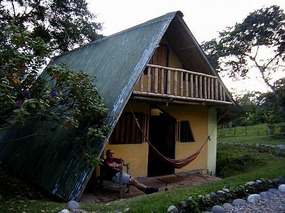

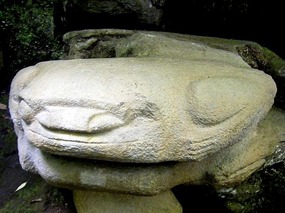
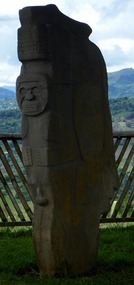
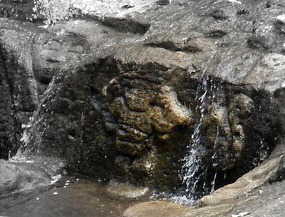
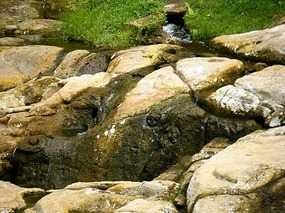

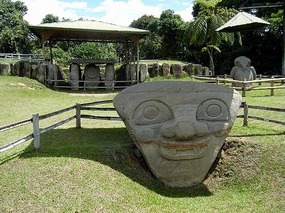
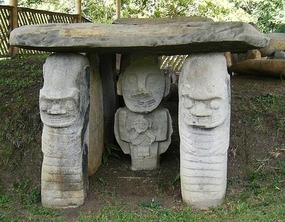
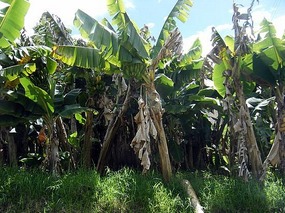
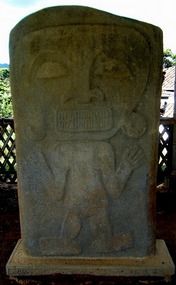
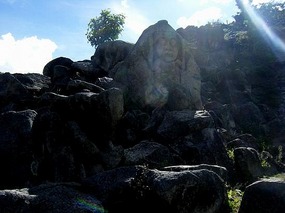


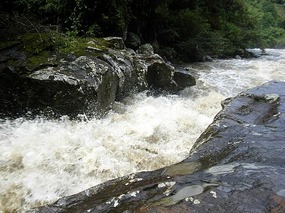
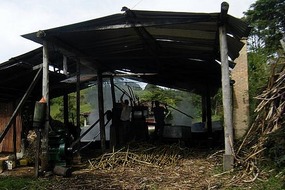
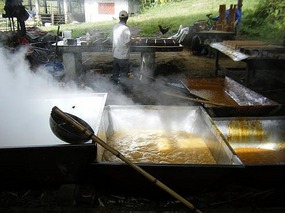
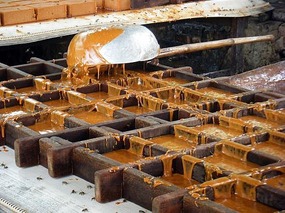

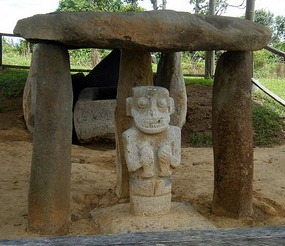

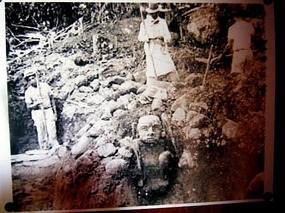
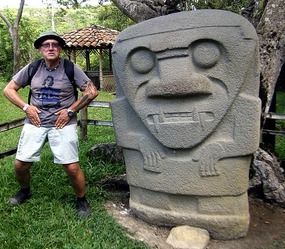




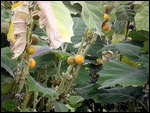

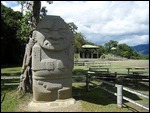
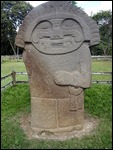
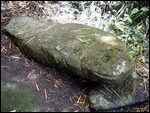
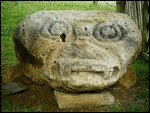


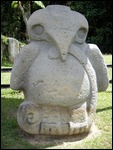
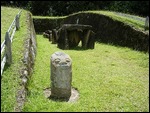

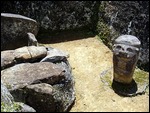
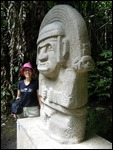
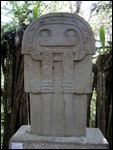
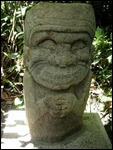
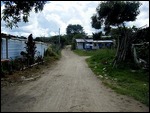
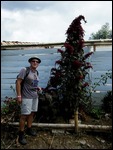
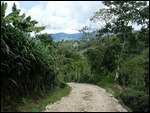
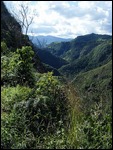
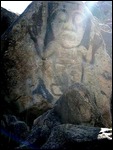
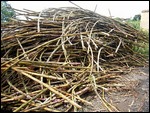
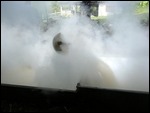
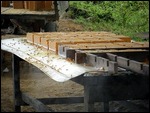
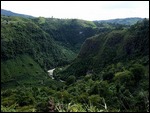
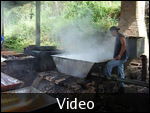
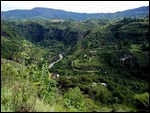
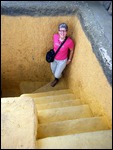

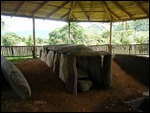
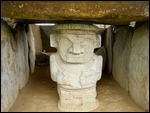
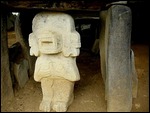
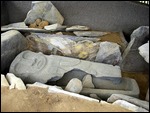
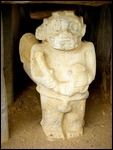
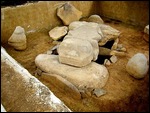

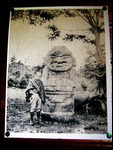
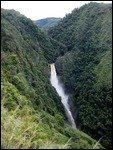
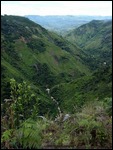
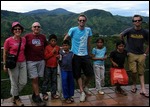
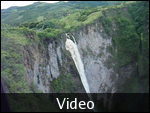


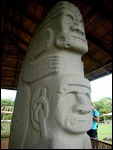

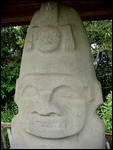

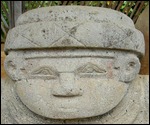
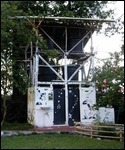
pawongle
2010-06-01
I'm with Tony when it comes to horses...they are scary...they should have had more statues of horses holding scary things (but not strangling children maybe).
I went to Alma Park Zoo the other day with Bea and discovered I am even scared of donkeys...I wouldn't have gone very well in that place that was deeper than the Grand Canyon (actually I seem now to remember you guys didn't ride the donkeys then either...is that correct..?)...ah, I think I see a pattern emerging...